In this article you will read about the top 21 freedom fighters of India who dedicated their lives to the nation’s independence. Their courage, sacrifices, and leadership shaped the destiny of the country. Each of them came from different backgrounds but shared a common dream—freedom from British colonial rule.
From Mahatma Gandhi’s non-violence to Netaji Subhas Chandra Bose’s armed struggle, every leader contributed in unique ways. By studying their lives, you understand how freedom was earned through unity, bravery, and sacrifice.
1. Mahatma Gandhi (1869–1948)
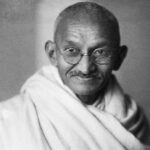
Mohandas Karamchand Gandhi, known as Mahatma Gandhi, was born on 2 October 1869 in Porbandar, Gujarat, and assassinated on 30 January 1948 in New Delhi. He is remembered as the Father of the Nation for leading India’s independence movement through non-violence (Ahimsa) and civil disobedience (Satyagraha).
Gandhi returned to India from South Africa in 1915 and soon became a key leader in the Congress. His first nationwide movement was the Non-Cooperation Movement (1920–1922), where he urged Indians to boycott British goods and institutions. Later, he launched the Salt March (Dandi March) on 12 March 1930, walking 240 miles to protest the salt tax. During Quit India Movement in August 1942, Gandhi gave the slogan “Do or Die,” urging Indians to fight until freedom was achieved.
His philosophy inspired millions worldwide, from Martin Luther King Jr. to Nelson Mandela. Gandhi sacrificed his entire life for the country, leaving behind a legacy of truth and non-violence.
2. Netaji Subhas Chandra Bose (1897–1945*)

Subhas Chandra Bose, popularly called Netaji, was born on 23 January 1897 in Cuttack, Odisha. His mysterious death is believed to have occurred on 18 August 1945 after a plane crash in Taiwan, though debates still continue.
Netaji was a brilliant student and an Indian Civil Services (ICS) officer who resigned to join the independence struggle. He rose to become the President of the Indian National Congress in 1938 and 1939 but resigned due to differences with Gandhi. During World War II, he sought international support and formed the Indian National Army (INA) in 1942. Under his leadership, the INA fought alongside Japan against British forces.
Netaji’s famous call, “Give me blood, and I will give you freedom,” inspired thousands to join the movement. On 14 April 1944, INA hoisted the Indian tricolor in Moirang, Manipur. His efforts shook British confidence and accelerated India’s freedom.
3. Bhagat Singh (1907–1931)

Bhagat Singh, one of the most iconic revolutionaries, was born on 28 September 1907 in Banga, Punjab (now in Pakistan). He was executed by the British on 23 March 1931 in Lahore, along with Rajguru and Sukhdev.
Bhagat Singh became involved in politics at a young age and joined the Hindustan Socialist Republican Association (HSRA). In 1928, he, Rajguru, and Chandrashekhar Azad avenged the death of Lala Lajpat Rai by assassinating British officer John Saunders. On 8 April 1929, Bhagat Singh and Batukeshwar Dutt threw bombs in the Central Legislative Assembly, shouting “Inquilab Zindabad” (Long Live the Revolution).
Though arrested, Singh used the trial to spread his revolutionary ideas. He refused mercy and embraced martyrdom at the age of 23. His sacrifice made him a youth icon and continues to inspire courage and patriotism.
4. Sardar Vallabhbhai Patel (1875–1950)
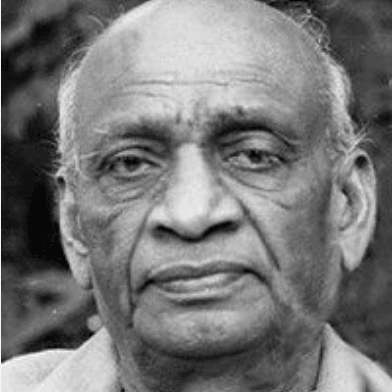
Sardar Vallabhbhai Patel, known as the Iron Man of India, was born on 31 October 1875 in Nadiad, Gujarat, and passed away on 15 December 1950 in Mumbai.
Patel was a close associate of Gandhi and played a crucial role in organizing farmers during the Kheda Satyagraha (1918) and Bardoli Satyagraha (1928). His leadership during the Quit India Movement (1942) made him one of the top leaders of Congress.
After independence, Patel became India’s first Deputy Prime Minister and Home Minister. His greatest contribution was the integration of over 500 princely states into the Indian Union between 1947–1949, ensuring India’s unity. His firmness earned him the title “Sardar” (leader).
Patel’s vision of unity remains a cornerstone of India’s identity. The Statue of Unity in Gujarat, inaugurated in 2018, stands as the world’s tallest statue, honoring his legacy.
5. Jawaharlal Nehru (1889–1964)

Jawaharlal Nehru, India’s first Prime Minister, was born on 14 November 1889 in Allahabad (Prayagraj) and died on 27 May 1964 in New Delhi.
Nehru joined Gandhi in the freedom struggle and became a prominent leader of the Indian National Congress. He was imprisoned multiple times, including during the Non-Cooperation Movement (1920) and the Quit India Movement (1942). His speeches, such as “Tryst with Destiny” on 15 August 1947, inspired hope for a free India.
Nehru’s vision for a modern India focused on industrialization, education, and scientific development. He established institutions like the Indian Institutes of Technology (IITs). As a leader, he combined nationalism with progressive ideals, leaving a lasting mark on independent India.
6. Rani Lakshmibai (1828–1858)

Rani Lakshmibai, the Queen of Jhansi, was born on 19 November 1828 in Varanasi as Manikarnika Tambe. She became one of the leading figures of the First War of Independence in 1857. She died a heroic death on 18 June 1858while fighting the British at Gwalior.
After her husband, Raja Gangadhar Rao of Jhansi, died in 1853, the British refused to recognize her adopted son as heir under the Doctrine of Lapse. Determined to protect her kingdom, she led her forces against British troops. In March 1858, she defended Jhansi fort courageously against General Hugh Rose’s army. Later, she joined forces with Tantia Tope and Nana Sahib.
Lakshmibai fought on the battlefield dressed as a soldier, sword in hand, inspiring women and men alike. Her courage made her a national icon. Today, she symbolizes bravery, patriotism, and resistance to oppression.
7. Chandrashekhar Azad (1906–1931)
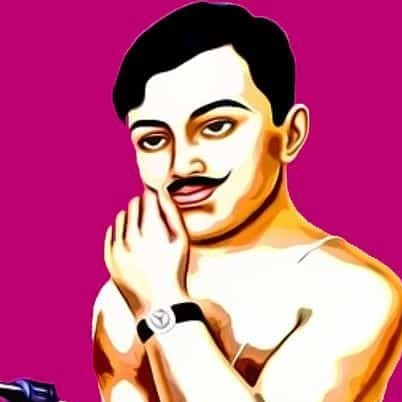
Chandrashekhar Azad, one of the boldest revolutionaries, was born on 23 July 1906 in Bhavra, Madhya Pradesh. He died on 27 February 1931 in Allahabad after a fierce encounter with the British police.
Azad joined the Non-Cooperation Movement in 1921 as a teenager. When arrested, he declared his name as “Azad” (Free), his father’s name as “Swatantrata” (Freedom), and his residence as “Jail.” From then, he was known as Chandrashekhar Azad.
He became a key member of the Hindustan Socialist Republican Association (HSRA) and worked closely with Bhagat Singh and Rajguru. After the death of Lala Lajpat Rai in 1928, Azad organized revolutionary activities against the British. On 27 February 1931, he engaged in a gun battle at Alfred Park (now Azad Park) in Allahabad and shot himself with his last bullet, vowing never to be captured alive. His fearless death made him a martyr for Indian youth.
8. Bal Gangadhar Tilak (1856–1920)
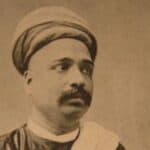
Bal Gangadhar Tilak, known as Lokmanya Tilak, was born on 23 July 1856 in Ratnagiri, Maharashtra, and died on 1 August 1920 in Mumbai.
Tilak was one of the first leaders to demand Swaraj (self-rule) as India’s birthright. In 1894, he launched the Ganesh Utsav and Shivaji Utsav to unite people against British rule. His strong writings in the newspaper Kesari criticized colonial policies and inspired nationalism.
Tilak was also a founder of the Deccan Education Society and supported the Swadeshi Movement during the Partition of Bengal in 1905. The British arrested him several times, including a six-year imprisonment in Mandalay, Burma (1908–1914).
His slogan, “Swaraj is my birthright, and I shall have it,” became the mantra of freedom. Tilak’s leadership earned him the title Lokmanya, meaning “accepted by the people as their leader.”
9. Lala Lajpat Rai (1865–1928)

Lala Lajpat Rai, known as the Lion of Punjab, was born on 28 January 1865 in Punjab and died on 17 November 1928 in Lahore.
A strong nationalist and social reformer, Lajpat Rai co-founded the Punjab National Bank in 1894 and was a prominent leader of the Lal-Bal-Pal trio (with Bal Gangadhar Tilak and Bipin Chandra Pal). He played an active role in the Swadeshi Movement (1905).
On 30 October 1928, during protests against the Simon Commission in Lahore, Lajpat Rai was brutally lathi-charged by British police under J.A. Scott. Though he survived the assault initially, he died on 17 November 1928 due to injuries. His death angered young revolutionaries like Bhagat Singh, Rajguru, and Sukhdev, who later avenged him by killing British officer Saunders.
Lajpat Rai’s sacrifice made him a symbol of resistance, and he continues to be remembered as a fearless patriot.
10. Gopal Krishna Gokhale (1866–1915)
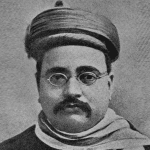
Gopal Krishna Gokhale was born on 9 May 1866 in Ratnagiri, Maharashtra, and died on 19 February 1915. He was a moderate leader, reformer, and mentor to Mahatma Gandhi.
Gokhale was associated with the Indian National Congress and founded the Servants of India Society in 1905, which worked for social reforms and education. He strongly opposed the Partition of Bengal in 1905 and supported the Swadeshi movement through peaceful methods.
He believed in gradual reforms and dialogue with the British, earning him the respect of many as a wise statesman. Gandhi, in his autobiography, described Gokhale as his political guru. Though Gokhale passed away before India’s independence struggle reached its peak, his ideas of constitutional reforms and social justice laid the foundation for future movements11. Mangal Pandey (1827–1857)
Mangal Pandey, remembered as the first martyr of India’s freedom struggle, was born on 19 July 1827 in Nagwa, Uttar Pradesh. He died on 8 April 1857 by execution after rebelling against the British.
Pandey was a sepoy in the 34th Bengal Native Infantry of the British East India Company. On 29 March 1857, at Barrackpore, he attacked British officers, protesting against the use of cartridges rumored to be greased with cow and pig fat. This act hurt the religious sentiments of both Hindus and Muslims. His bold defiance became the spark that ignited the First War of Independence in 1857.
Though the British hanged him, his bravery inspired widespread revolts across northern India. Mangal Pandey’s sacrifice turned him into a symbol of resistance and the beginning of India’s struggle for independence.
12. Bipin Chandra Pal (1858–1932)

Bipin Chandra Pal, one of the famous Lal-Bal-Pal trio, was born on 7 November 1858 in Sylhet (now Bangladesh) and died on 20 May 1932 in Kolkata.
Pal strongly supported the Swadeshi Movement (1905) after the Partition of Bengal. He urged Indians to boycott foreign goods and adopt indigenous products. As a journalist and writer, he spread nationalist ideas through newspapers like New India and Bande Mataram.
Unlike moderates, Pal believed in radical methods to achieve independence. He worked with Tilak and Lala Lajpat Rai to ignite mass movements. Though he later distanced himself from revolutionary violence, his writings and speeches inspired Indians to unite against colonial rule.
Pal is remembered as the “Father of Revolutionary Thoughts in India” because he challenged the British with boldness and vision. His contribution laid the groundwork for later movements of independence.
13. Dadabhai Naoroji (1825–1917)
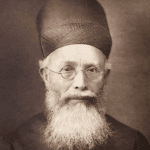
Dadabhai Naoroji, known as the Grand Old Man of India, was born on 4 September 1825 in Mumbai and died on 30 June 1917.
Naoroji was the first Indian to become a Member of Parliament in Britain in 1892, representing Finsbury Central. He used this position to expose the economic exploitation of India by the British. His famous “Drain of Wealth Theory” (1867) showed how Britain drained India’s resources through unfair trade and taxation.
As a founding member of the Indian National Congress in 1885, Naoroji advocated for self-rule. In 1906, he became the first leader to demand Swaraj as the goal of Congress.
Though he belonged to the moderate camp, his research and speeches gave Indians the confidence to challenge colonial exploitation. His intellectual leadership inspired future leaders like Gandhi and Nehru.
14. Sarojini Naidu (1879–1949)

Sarojini Naidu, known as the Nightingale of India, was born on 13 February 1879 in Hyderabad and died on 2 March 1949 in Lucknow.
A gifted poet and orator, she joined the Indian National Congress and worked closely with Gandhi. She played a major role in the Civil Disobedience Movement (1930) and was arrested during the Salt Satyagraha. She also became the first Indian woman president of the Indian National Congress in 1925.
After independence, she served as the first woman Governor of Uttar Pradesh. Through her speeches and poems, she inspired women to join the freedom struggle. She sacrificed her personal comfort for the cause of India and became a role model for future generations.
15. Ram Prasad Bismil (1897–1927)
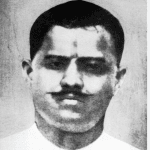
Ram Prasad Bismil, a revolutionary poet and freedom fighter, was born on 11 June 1897 in Shahjahanpur, Uttar Pradesh, and executed on 19 December 1927 in Gorakhpur Jail.
He was a founding member of the Hindustan Socialist Republican Association (HSRA). Bismil is best remembered for leading the Kakori Train Robbery on 9 August 1925, where revolutionaries looted government money to fund the freedom struggle. Arrested after the event, he was sentenced to death.
Bismil was also a talented poet, writing patriotic verses under the pen name Bismil. His famous poem “Sarfaroshi ki Tamanna” became the anthem of revolutionaries. His fearless sacrifice at the age of 30 turned him into a symbol of courage and patriotism.
16. Veer Savarkar (1883–1966)
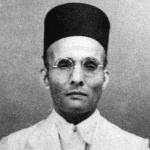
Vinayak Damodar Savarkar, popularly called Veer Savarkar, was born on 28 May 1883 in Bhagur, Maharashtra, and died on 26 February 1966 in Mumbai.
He was a revolutionary, writer, and strong nationalist who inspired youth with his ideas of complete independence. Savarkar founded the Abhinav Bharat Society in 1904 and promoted revolutionary activities against British rule. In 1909, he published The First War of Indian Independence 1857, describing the 1857 revolt as a national uprising.
Arrested in 1910, he was sentenced to two life imprisonments and sent to the Cellular Jail in Andaman Islands, where he endured unimaginable torture. Despite prison hardships, he wrote extensively, inspiring future revolutionaries.
Savarkar’s vision of self-reliance and his sacrifices made him one of the boldest voices of India’s independence movement.
17. Annie Besant (1847–1933)
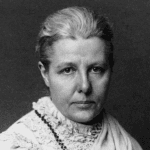
Annie Besant, an Irish-born theosophist and freedom activist, was born on 1 October 1847 in London and died on 20 September 1933 in Madras (now Chennai).
She became a champion of Indian self-rule and joined the Indian National Congress, serving as its first woman president in 1917. She launched the Home Rule League in 1916, demanding dominion status for India. Her campaign united thousands of Indians in the fight for self-government.
Annie Besant also promoted education, becoming a key figure in establishing the Banaras Hindu University with Pandit Madan Mohan Malaviya. Her belief in India’s destiny as a free nation made her an admired leader, even though she was not Indian by birth.
Her life shows you how freedom struggles attract support beyond borders when the cause is just and righteous.
18. Ashfaqulla Khan (1900–1927)
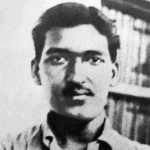
Ashfaqulla Khan was born on 22 October 1900 in Shahjahanpur, Uttar Pradesh, and executed on 19 December 1927 in Faizabad Jail.
A close associate of Ram Prasad Bismil, he was also a member of the Hindustan Socialist Republican Association (HSRA). Ashfaqulla Khan actively participated in the Kakori Train Robbery on 9 August 1925 to raise funds for revolutionary activities.
Though captured and tried by the British, he showed no fear and faced execution with courage. His sacrifice, along with Bismil and Roshan Singh, demonstrated Hindu-Muslim unity in the freedom struggle. His famous words before death, “My hands are in chains, but my heart is free,” continue to inspire Indians.
19. Kunwar Singh (1777–1858)
Kunwar Singh, the hero of the 1857 Revolt in Bihar, was born in 1777 in Jagdishpur, Bihar, and died on 26 April 1858.
At the age of 80, he joined the uprising against British rule during the First War of Independence in 1857. Despite his old age, he led his troops with extraordinary courage. He fought several battles across Bihar and Uttar Pradesh, displaying brilliant guerrilla warfare tactics.
In one battle, when his arm was wounded, he cut it off and offered it to the Ganga, showing unmatched bravery. Kunwar Singh’s leadership inspired thousands of peasants and soldiers in Bihar to rise against the British. He remains a symbol of courage and resistance, proving that age is no barrier in the fight for freedom.
20. Sukhdev Thapar (1907–1931)

Sukhdev Thapar, a revolutionary hero, was born on 15 May 1907 in Ludhiana, Punjab, and executed on 23 March 1931 along with Bhagat Singh and Rajguru.
As a member of the Hindustan Socialist Republican Association (HSRA), Sukhdev played a crucial role in revolutionary activities. He participated in the plan to avenge Lala Lajpat Rai’s death by targeting British officer Saunders in 1928.
Like Bhagat Singh, he believed in inspiring the youth with revolutionary ideas. Arrested for his role in the Lahore Conspiracy Case, he faced trial and embraced martyrdom at just 23 years old. His bravery and sacrifice made him an unforgettable figure in India’s history.
21. Rajguru (1908–1931)
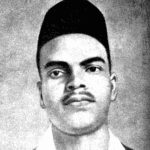
Shivaram Rajguru, commonly known as Rajguru, was born on 24 August 1908 in Pune, Maharashtra. He was executed on 23 March 1931 in Lahore Jail, along with Bhagat Singh and Sukhdev.
Rajguru was a skilled marksman and a member of the HSRA. He joined Bhagat Singh and Sukhdev in the assassination of British officer John Saunders on 17 December 1928, carried out to avenge the death of Lala Lajpat Rai.
Though very young, Rajguru displayed immense courage. His fearless sacrifice at the age of 22 highlighted the spirit of India’s youth in the struggle for independence. Together with Bhagat Singh and Sukhdev, he became immortal in history as part of the Shaheed-e-Azam trio.
Conclusion
The story of India’s independence is incomplete without remembering these 21 great freedom fighters. From Gandhi’s non-violence to Bhagat Singh’s revolutionary spirit, from Rani Lakshmibai’s courage to Netaji’s leadership, each of them contributed uniquely. They sacrificed comfort, family, and even their lives so that you could live in a free nation.
By studying their lives, you understand that freedom did not come overnight—it was earned through centuries of struggle, unity, and determination. Honoring their sacrifices keeps their legacy alive and reminds you of your responsibility to protect and strengthen the hard-earned freedom of India.

